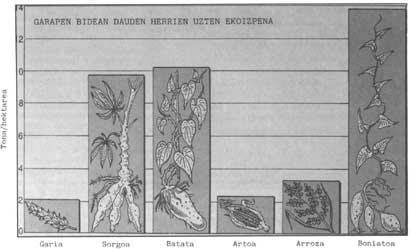Bread without wheat

In the last 40 years, thousands of people have stopped eating bread with products such as sorghum, millet, etc. and started eating white bread. The reasons are not incomprehensible. Bread made with wheat flour is tasty, easy to carry, not useless in a few days and helps many other foods.
The shift to white bread can fully confuse the national economy. The urban population acts in the first place in favor of wheat. As bread is demanded, demand for traditional products decreases. Farmers who see crop incomes declining work hard to increase their production. This often only increases surplus, subsequently decreasing prices. This situation weakens agriculture and the economy of many developing countries is based on agriculture.
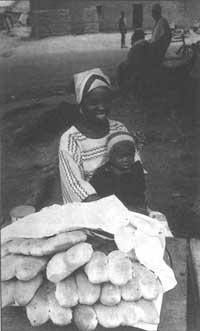
The breads purchased on the market or in the store replace traditional food with lack of prior preparation. Other products, such as millet, sweet potato, cassava or potato itself, require a long and elaborate preparation prior to cooking and are better for immediate preparation and consumption. They cannot be stored for many days.
The work structure of the cities is more rigid than that of the villages. People in cities need fast food and bread meets this condition. No wonder, therefore, that as life changes in cities, towns and cities grow, people prefer white bread than products made from native roots, tubers and cereals.
The Food and Agriculture Organization (FAO) has been studying in the last year and a half the possibility of making bread with production, cassava and other local products. If people want bread, it should be a bread made regardless of flour, since the import of wheat flour endangers agriculture.
Importing wheat can cause great damage. From one thousand nine hundred and sixty to one thousand nine hundred and eighty-six months, annual wheat consumption in tropical nations has increased by 3%, while root and tuber consumption has decreased by 0.5%. Overall, 38 tropical states consume more than 100,000 tons of wheat per year, nine of them in more than a million tons.
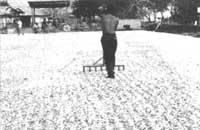
To see where wheat consumption goes up, just consider the location of wheat flour factories.
Overproduction of wheat in the temperate countries of Canada, Europe and the United States has generated a huge surplus. Consequently, in many developing nations the price of wheat (artificially) is low. Egypto, for example, has recently had to double the price of the bread bar. In tropical nations they could produce more wheat, but wheat does not grow much and its products are collected much more. They better resist the extremes of the tropical climate. Researchers try to increase wheat production in tropical nations, but they have not gone through the first steps.
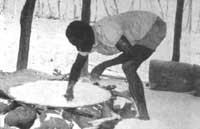
For anyone who is making bread, the most important attraction wheat has is not its taste, but wheat grain has gluten. Protein with remarkable viscosity and elasticity properties. Another important feature of gluten is that it allows the small carbon oxide (IV) bubbles produced by yeast during fermentation to be introduced and expanded and hardened. When heating the dough, the heat places the glutinous mass around the bubble, giving the bread that proud look.
A series of tests have been carried out for the production of composite breads by mixing flour from other products. In this way prices would change a lot, but it does not seem to have a clear future because, among other reasons, wheat has become cheaper than other products.
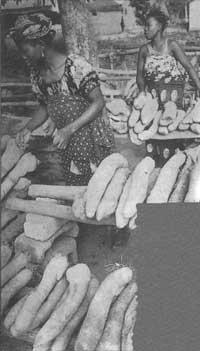
The bread baker with traditional products must incorporate a gluten substitute into the flour, but in almost all cases it will be necessary to import it. The Food and Agriculture Organization has replaced gluten with xanthan gum. It has been recognized as a food additive in the United States. In foods that require little preparation time, even as thickening agents. Despite being expensive when buying xanthan, developing nations can produce xanthan, as the climate does not affect this production.
Despite adding xanthan to the dough of cassava flour and sorghum flour, good looking bread is made.
For the production of white bread, gluten is currently not considered essential. With xanthan it is possible to make sorghum bread and manioc. It is also a long-lasting bread with better flavor in the case of manioc. In any case, the basic condition is that there is something that provides stable but flexible cavities to maintain the carbon oxide (IV) bubbles produced by yeast.
The success of Xanthan forced researchers to transgress other ways of producing these flexible cavities.
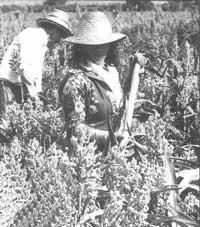
Studies conducted in 1987 and 1988 indicate that bread can be made commercially or at home with rice, millet, corn or sorghum, as well as with other roots and tubers. For developing states this can have profound consequences. Unfortunately, technology is not enough to change government policy. However, many tropical countries are currently studying ways to control wheat imports.
Many other states would like bread without wheat, but they do not have the right technology to carry it out or a policy that commercially potentiates their products.
Developed States export cereals, at least where governments do not intervene, endangering local agriculture. But if exporting States to the Third World reduce production from cutting excess wheat, and the Third World increases local production of wheat substitution, in the long run all States would have benefits.
For developing nations to seek economic development, it must be agricultural and non-industrial.
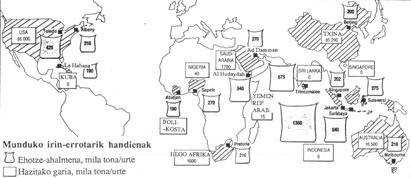
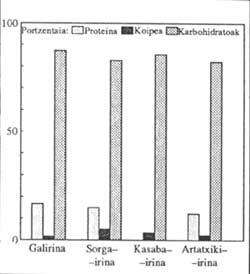
Buletina
Bidali zure helbide elektronikoa eta jaso asteroko buletina zure sarrera-ontzian




